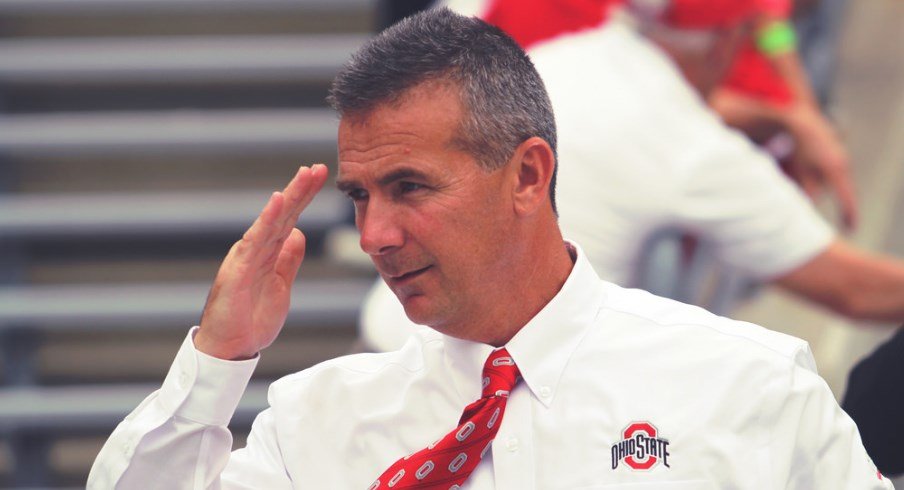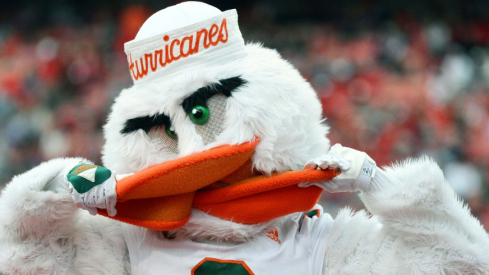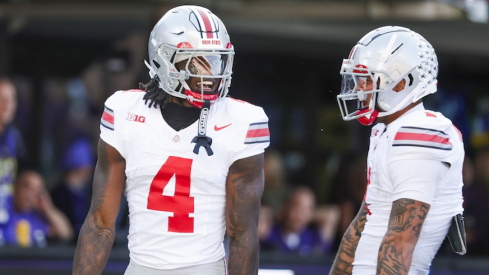If you're a college football program that exists on the planet for the last ten-ish years or so, and you're hiring Urban Meyer, you pretty much know what you're going to get in terms of recruiting: you'll be a national brand, go after anyone, have a super byzantine system for calculating your class size, and will travel anywhere to get the best possible players.
Though he hadn't yet established his bona fides, Urban Meyer was already a big name to the denizens of Salt Lake, who had been mired in years of mediocrity. He was an exciting, young coaching talent, as this 2002 Deseret News profile shows:
Meyer, 38, is a fast-rising star after a 17-6 two-year record at Ohio's Bowling Green, where he took a team that was 2-9 in 2000 and had six straight losing seasons to 8-3 and was named Mid-America Conference coach of the year. It was the nation's biggest turnaround that year.
Meyer takes his 41-points-a-game scoring average and jumps from the MAC to the house that Mac built.
Ignoring the shade cast upon the MAC from a then-Mountain West team, the whole thing reads like every other breathless "woo new coach" article you've ever seen. What's interesting however, is that it doesn't mention recruiting once. And while maybe you could chalk that up to lowered expectations at a middle-tier college football program, the main point is that Urban Meyer's reputation as a man with killer instincts about quality high school players hadn't begun to set in yet.
In other words, Urban's recruiting empire didn't come out of nowhere, and it did take a while to build. After toiling in Bowling Green for a few seasons, Meyer made his initial mark at Utah, where his two credited recruiting classes were... fine. The only Ute class that was truly his, 2004, was made up of the same kind of motley crew that he'd gathered around him before, but as per usual he was able to get the most out of the talent that he had.
Guys like Eric Weddle, now one of the better safeties in the NFL, started out as bit players in the Urban Meyer system. In fact, Weddle (and others) could be regarded as the true starting point for Urban Meyer's recruiting dominance.
This isn't Weddle's story, though. Eric Weddle was a lightly regarded two-star wide receiver coming out of high school, and the rest of his 2003 Utah Ute recruiting class was fairly nondescript. As amazing as his career has been, coming out of high school he didn't represent the kind of recruit that we've come to associate with Urban Meyer (and in fact people would probably be pretty upset with his inclusion in). The same could be said for a lot of early Meyer recruits, many of whom would go on to have success despite their lack of pedigree.
So, 2004. Utah. For the most part, Urban Meyer signed the same kind of players that he had at Bowling Green and in his first season at Utah. Some really exciting players mixed in with a sea of mediocrity, but coached up by an absolute crazy person so it all works out in the end. In a lot of ways, Meyer was forced to be almost Tresselian in his approach to personnel. With one interesting exception.
Defensive tackle Paul Soliai was a junior college transfer from Coffeyville Community College who was, as far as I can tell (you might be surprised to learn that recruiting coverage in 2003ish was not quite as sophisticated as it is today), Urban Meyer's first prospect ranked four stars or more. Meyer had had great players before, but guys like Alex Smith and Josh Harris were already part of the programs that he was taking over. Soliai was the first guy who was truly his, and since that four-star victory Meyer has dominated the recruiting world, even if it's come in fits and spurts occasionally.
You can see a little bit into the future with the way that 2004 Urban Meyer talked about Soliai right after the class was signed:
Paul is our top recruit. He was recruited nationally and he will make an immediate impact on our offensive line. He is a tremendous talent who has NFL potential.
The two phrases that pop out at me there are "recruited nationally" and "NFL potential." Even at that early stage, Meyer was thinking in terms of how a player is thought of on a national scale. For all the people concerned about the 2017 Ohio State class not having a lot of Ohio kids, just understand that that kind of thing hasn't been a Meyer priority since at least 2004, and likely before that. The talk about having 50% Ohio players in a recruiting class is nice, but ultimately more of a feel-good statement than anything else.
The second phrase is "NFL potential." Meyer rightly has recognized that one of the biggest carrots that you can give to a football-gifted teenager is the promise of doing this for realsies. It's a mantra that he's repeated time and time again in pursuit of players like Elliott or Bosa or Haskins, and as a strategy for picking up recruits, it's been extremely effective.
Soliai, for the record, ended up being a consistent NFL player and as of last season still had a contract with the Carolina Panthers.
It's important to remember that these are articles from 15 years ago. Urban Meyer has been cultivating his approach to recruiting for a long, long time now, and with the exceptions of a few seasons here and there, has consistently brought in top five classes filled with the best players in the country.
After he left Utah, Meyer was tasked with reinvigorating a Florida program that had become moribund under Ron Zook. His first recruiting class finished 12th nationally, his second was also second in the nation, and by his third season he had easily the best recruiting class in the country.
For outside observers this rise might've been startling, but for Urban Meyer it was just the logical progression of a passion for recruiting that started with one guy named Paul Soliai.


